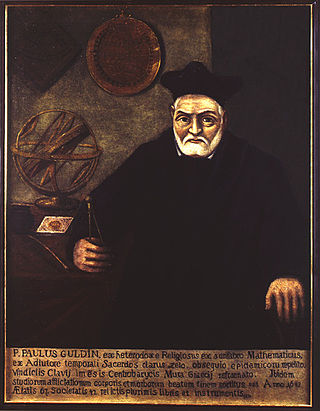Paul Guldin
Swiss mathematician and astronomer (1577–1643) From Wikipedia, the free encyclopedia
Paul Guldin (born Habakkuk Guldin; 12 June 1577 (Mels) – 3 November 1643 (Graz)) was a Swiss Jesuit mathematician and astronomer. He discovered the Guldinus theorem to determine the surface and the volume of a solid of revolution. (This theorem is also known as the Pappus–Guldinus theorem and Pappus's centroid theorem, attributed to Pappus of Alexandria.) Guldin was noted for his association with the German mathematician and astronomer Johannes Kepler.[1] Guldin composed a critique of Cavalieri's method of Indivisibles.[2]
This article needs additional citations for verification. (May 2014) |
Paul Guldin | |
|---|---|
 Paul Guldin | |
| Born | 12 June 1577 |
| Died | 3 November 1643 (aged 66) |
| Nationality | Swiss |
| Other names | Habakkuk Guldin |
| Occupation(s) | Jesuit mathematician astronomer |
| Known for | Guldinus theorem |
Although of Jewish descent, his parents were Protestants and they brought Guldin up in that faith.[3] He was a professor of mathematics in Graz and Vienna.
In Paolo Casati's astronomical work Terra machinis mota (1658), Casati imagines a dialogue among Guldin, Galileo, and Marin Mersenne on various intellectual problems of cosmology, geography, astronomy and geodesy.
See also
Notes
Wikiwand - on
Seamless Wikipedia browsing. On steroids.
